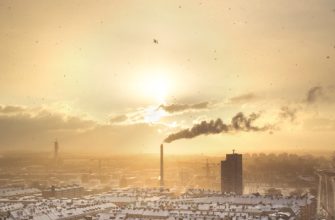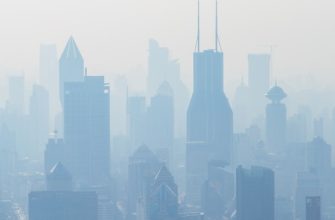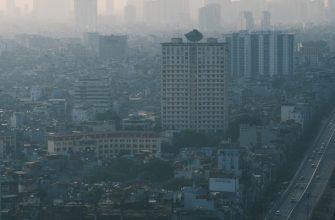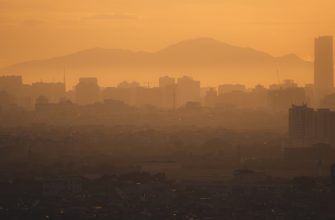- Understanding the Invisible Dangers of Air Pollution
- How Polluted Air Impacts Lung Health: The Science Explained
- The Connection Between Air Quality and Respiratory Diseases
- At-Risk Populations: Who Suffers Most from Polluted Air?
- Practical Tips for Protecting Your Lungs from Air Pollution
- The Global Crisis: Air Pollution’s Toll on Public Health
Understanding the Invisible Dangers of Air Pollution
Air pollution poses a significant risk to respiratory health, often going unnoticed until serious health issues arise. The invisible dangers of polluted air can severely compromise lung function and overall well-being. Understanding these threats is crucial for individuals and communities alike.
- Particulate matter, often emitted from vehicles and industrial processes, can penetrate deep into the lungs, causing chronic respiratory diseases.
- Volatile organic compounds (VOCs), prevalent in many household products, contribute to indoor air pollution, leading to various health problems over time.
- Nitrogen dioxide, commonly found in urban areas, exacerbates asthma and other lung conditions, especially among vulnerable populations like children and the elderly.
- Ground-level ozone, a byproduct of vehicle emissions and industrial pollutants, can cause lung irritation and reduced lung function, particularly during hot weather.
The cumulative effects of these pollutants can lead to serious health conditions, including lung cancer, chronic obstructive pulmonary disease (COPD), and other respiratory illnesses. Awareness of air quality and its impact is essential for proactive health measures.
Monitoring air quality indices and adopting measures to reduce exposure to polluted air can significantly enhance lung health. Simple steps, such as using air purifiers indoors and avoiding outdoor activities during high pollution days, can mitigate the risks associated with contaminated air.
In summary, the hidden threats posed by air pollution to lung health cannot be underestimated. Understanding the sources and effects of polluted air is vital in promoting healthier living environments and protecting respiratory health for all.
How Polluted Air Impacts Lung Health: The Science Explained
Air pollution poses a significant threat to lung health, impacting respiratory function and overall well-being. The relationship between polluted air and lung conditions is well-documented in scientific literature. Exposure to contaminants such as particulate matter, nitrogen dioxide, and sulfur dioxide can lead to various health issues.
- Particulate Matter (PM): Fine particles can penetrate deep into the lungs, causing inflammation and exacerbating chronic respiratory diseases.
- Nitrogen Dioxide (NO2): This gas can irritate the airways and is linked to increased asthma attacks and other respiratory problems.
- Sulfur Dioxide (SO2): Exposure can cause airway inflammation and aggravate pre-existing lung conditions, leading to severe health risks.
Long-term exposure to polluted air may result in chronic conditions such as asthma, chronic obstructive pulmonary disease (COPD), and lung cancer. Studies have shown that individuals living in areas with high levels of air pollution experience a decline in lung function over time.
Additionally, vulnerable populations, including children and the elderly, are at a greater risk of adverse effects from polluted air. Children’s lungs are still developing, making them particularly susceptible to air contaminants. For the elderly, pre-existing health issues can be exacerbated by poor air quality.
To mitigate the impacts of polluted air on lung health, it is crucial to understand the sources of air pollution and take actionable steps to reduce exposure. Implementing air quality regulations and promoting clean energy solutions can significantly improve respiratory health outcomes.
In conclusion, the effects of polluted air on lung health are profound and far-reaching. Understanding these impacts can aid in raising awareness and driving collective action toward cleaner air for healthier lungs.
The Connection Between Air Quality and Respiratory Diseases
Air quality is a crucial factor in public health, significantly affecting respiratory diseases. Poor air quality can lead to a range of health issues, particularly for individuals with pre-existing lung conditions. Contaminants such as particulate matter, nitrogen dioxide, and sulfur dioxide can exacerbate asthma, chronic bronchitis, and other respiratory illnesses.
Research indicates that exposure to polluted air is linked to increased hospital admissions for respiratory diseases. The inhalation of toxic substances can trigger inflammatory responses in the lungs, leading to symptoms such as coughing, wheezing, and shortness of breath. Over time, prolonged exposure to poor air quality may contribute to the development of chronic respiratory conditions.
- Particulate Matter (PM): Fine particles that penetrate deep into the lungs, causing irritation and inflammation.
- Nitrogen Dioxide (NO2): A gas emitted from vehicles and industrial processes, linked to increased asthma attacks.
- Sulfur Dioxide (SO2): A pollutant primarily from fossil fuel combustion, known to aggravate existing lung diseases.
- Ozone (O3): Ground-level ozone can cause respiratory distress and reduce lung function, especially in vulnerable populations.
Children and the elderly are particularly susceptible to the adverse effects of poor air quality. Studies have shown that children exposed to polluted air are at a higher risk of developing respiratory issues, and elderly individuals with weakened immune systems may face serious health challenges. This underscores the importance of monitoring air quality and implementing measures to reduce pollution levels.
To combat the hidden threat of polluted air, communities can adopt various strategies, including promoting public transportation, enhancing green spaces, and implementing stricter emissions regulations. By prioritizing clean air initiatives, it is possible to protect lung health and reduce the prevalence of respiratory diseases in the population.
At-Risk Populations: Who Suffers Most from Polluted Air?
Polluted air poses significant health risks, particularly for certain demographics. Vulnerable groups are disproportionately affected by the detrimental effects of air pollution, leading to serious respiratory issues and other health complications. Understanding which populations suffer most can help in formulating effective strategies to mitigate the risks associated with contaminated air.
- Children: Young lungs are still developing, making children especially susceptible to the harmful effects of air pollution. Exposure can lead to chronic respiratory diseases and reduced lung function.
- The Elderly: Older adults often have pre-existing health conditions, which are exacerbated by polluted air. This group experiences higher rates of respiratory illnesses and cardiovascular problems linked to air quality.
- Individuals with Pre-existing Health Conditions: People suffering from asthma, chronic obstructive pulmonary disease (COPD), and other respiratory disorders are at heightened risk. Polluted air can trigger severe symptoms and increase hospital visits.
- Pregnant Women: Air pollution has been associated with adverse pregnancy outcomes, including low birth weight and premature births. The developing fetus is particularly vulnerable to the effects of contaminated air.
- Low-Income Communities: Often located near industrial areas, low-income populations may face greater exposure to polluted air. Limited access to healthcare further complicates their ability to respond to health issues arising from air contamination.
By identifying these at-risk populations, targeted interventions can be developed to safeguard their health. Awareness of the dangers posed by polluted air is essential for protecting those who are most vulnerable. Addressing the issue of air contamination requires collective action to ensure cleaner air for everyone, particularly for those who suffer the most.
Practical Tips for Protecting Your Lungs from Air Pollution
Protecting the lungs from air pollution is essential for maintaining overall health. Airborne pollutants can have detrimental effects on respiratory systems, leading to various diseases. Implementing practical strategies can significantly reduce exposure to harmful substances found in polluted air.
- Stay Indoors on High Pollution Days: Check air quality indexes regularly and limit outdoor activities when pollution levels are elevated. Staying indoors during these times helps to minimize lung exposure to harmful particles.
- Use Air Purifiers: Investing in air purifiers equipped with HEPA filters can create a cleaner indoor environment. These devices effectively remove allergens and pollutants, improving air quality and protecting lung health.
- Avoid Smoking and Secondhand Smoke: Smoking is a major risk factor for lung diseases. Additionally, exposure to secondhand smoke can exacerbate respiratory issues. Quitting smoking and avoiding smoke-filled environments contribute to better lung protection.
- Practice Deep Breathing Exercises: Engaging in deep breathing can help strengthen lung function. Techniques such as diaphragmatic breathing enhance oxygen intake and promote relaxation, which is beneficial for lung health.
- Maintain a Healthy Diet: Consuming a diet rich in antioxidants, vitamins, and minerals supports lung health. Foods such as fruits, vegetables, and omega-3 fatty acids can help mitigate the effects of air pollution on the respiratory system.
- Stay Hydrated: Drinking plenty of water helps to thin mucus and keeps airways clear. Proper hydration is crucial for optimal lung function and overall health.
- Limit Physical Activity in Polluted Areas: When exercising outdoors, choose locations with better air quality. Engaging in physical activities in polluted environments can lead to increased inhalation of harmful particles.
By following these practical tips, individuals can take proactive measures to protect their lungs from the adverse effects of polluted air. Maintaining lung health is vital for overall well-being, especially in areas with high pollution levels. Implementing these strategies will contribute to healthier lungs and improved respiratory function.
The Global Crisis: Air Pollution’s Toll on Public Health
The global crisis of air pollution poses a significant threat to public health, affecting millions worldwide. The relationship between polluted air and respiratory illnesses is increasingly evident, with studies linking poor air quality to a range of health issues. Exposure to contaminants in the air can lead to severe conditions, including chronic obstructive pulmonary disease (COPD), asthma, and lung cancer.
Airborne pollutants such as particulate matter, nitrogen dioxide, and sulfur dioxide are common contributors to respiratory problems. These elements can penetrate deep into the lungs, causing inflammation and aggravating existing health conditions. Children, the elderly, and individuals with pre-existing health issues are particularly vulnerable to the adverse effects of contaminated air.
- Increased hospital admissions for respiratory diseases.
- Higher mortality rates associated with lung-related ailments.
- Long-term exposure leading to chronic respiratory illnesses.
- Worsening symptoms for individuals with asthma and allergies.
- Negative impacts on overall lung function and health.
Efforts to combat air pollution are essential for protecting public health. Implementing stricter regulations on industrial emissions, promoting the use of clean energy, and encouraging public transportation can significantly improve air quality. Additionally, raising awareness about the importance of reducing personal carbon footprints can contribute to a healthier atmosphere.
Understanding the implications of polluted air on lung health is crucial. Communities must come together to address the sources of air contamination, as collective action can lead to substantial improvements in air quality. As the global crisis of air pollution continues to evolve, the focus must remain on safeguarding public health and ensuring cleaner air for future generations.








